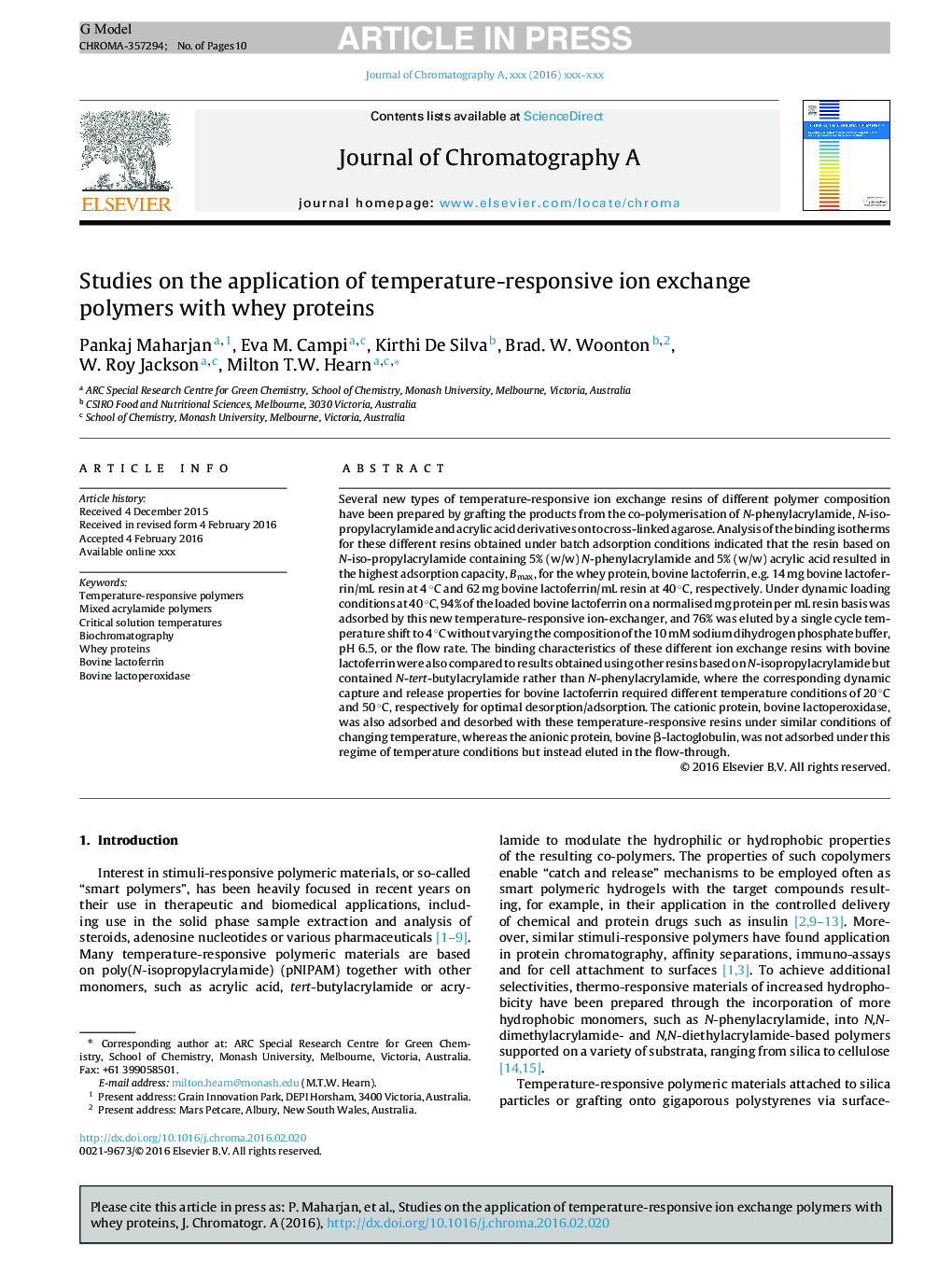| کد مقاله | کد نشریه | سال انتشار | مقاله انگلیسی | نسخه تمام متن |
|---|---|---|---|---|
| 7610175 | 1493488 | 2016 | 10 صفحه PDF | دانلود رایگان |
عنوان انگلیسی مقاله ISI
Studies on the application of temperature-responsive ion exchange polymers with whey proteins
ترجمه فارسی عنوان
مطالعات کاربرد پلیمرهای مبادله یون واکنش با دما و پروتئین های پنیری
دانلود مقاله + سفارش ترجمه
دانلود مقاله ISI انگلیسی
رایگان برای ایرانیان
کلمات کلیدی
موضوعات مرتبط
مهندسی و علوم پایه
شیمی
شیمی آنالیزی یا شیمی تجزیه
چکیده انگلیسی
Several new types of temperature-responsive ion exchange resins of different polymer composition have been prepared by grafting the products from the co-polymerisation of N-phenylacrylamide, N-iso-propylacrylamide and acrylic acid derivatives onto cross-linked agarose. Analysis of the binding isotherms for these different resins obtained under batch adsorption conditions indicated that the resin based on N-iso-propylacrylamide containing 5% (w/w) N-phenylacrylamide and 5% (w/w) acrylic acid resulted in the highest adsorption capacity, Bmax, for the whey protein, bovine lactoferrin, e.g. 14 mg bovine lactoferrin/mL resin at 4 °C and 62 mg bovine lactoferrin/mL resin at 40 °C, respectively. Under dynamic loading conditions at 40 °C, 94% of the loaded bovine lactoferrin on a normalised mg protein per mL resin basis was adsorbed by this new temperature-responsive ion-exchanger, and 76% was eluted by a single cycle temperature shift to 4 °C without varying the composition of the 10 mM sodium dihydrogen phosphate buffer, pH 6.5, or the flow rate. The binding characteristics of these different ion exchange resins with bovine lactoferrin were also compared to results obtained using other resins based on N-isopropylacrylamide but contained N-tert-butylacrylamide rather than N-phenylacrylamide, where the corresponding dynamic capture and release properties for bovine lactoferrin required different temperature conditions of 20 °C and 50 °C, respectively for optimal desorption/adsorption. The cationic protein, bovine lactoperoxidase, was also adsorbed and desorbed with these temperature-responsive resins under similar conditions of changing temperature, whereas the anionic protein, bovine β-lactoglobulin, was not adsorbed under this regime of temperature conditions but instead eluted in the flow-through.
ناشر
Database: Elsevier - ScienceDirect (ساینس دایرکت)
Journal: Journal of Chromatography A - Volume 1438, 18 March 2016, Pages 113-122
Journal: Journal of Chromatography A - Volume 1438, 18 March 2016, Pages 113-122
نویسندگان
Pankaj Maharjan, Eva M. Campi, Kirthi De Silva, Brad. W. Woonton, W. Roy Jackson, Milton T.W. Hearn,
